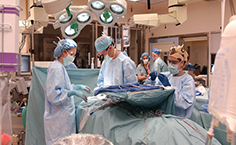| ||||||||||||||
martes, 21 de noviembre de 2017
Síndrome de burnout / Burnout syndorme
viernes, 17 de noviembre de 2017
Dolor crónico postamputación / Chronic post-amputation pain
| ||||||||||||
Medwave edición Noviembre-Diciembre 2017
| |||||||||||||||||||||||||||
| |||||||||||||||||||||||||||
| |||||||||||||||||||||||||||
|
Cambio de la utilización de imágenes de extremidades musculoesqueléticas desde 1994 hasta 2013
http://www.cirugiarticular.com.mx/academia/cambio-de-la-utilizacion-de-imagenes-de-extremidades-musculoesqueleticas-desde-1994-hasta-2013/
Fuente:
Este artículo es publicado originalmente en:
https://www.ncbi.nlm.nih.gov/pubmed/28777654
http://www.ajronline.org/doi/10.2214/AJR.17.18346
De:
Gyftopoulos S1, Harkey P2, Hemingway J3, Hughes DR3, Rosenkrantz AB1, Duszak R Jr2.
AJR Am J Roentgenol. 2017 Nov;209(5):1103-1109. doi: 10.2214/AJR.17.18346. Epub 2017 Aug 4.
Todos los derechos reservados para:
Copyright © 2013-2016, American Roentgen Ray Society, ARRS, All Rights Reserved.
Abstract
OBJECTIVE:
The objective of our study was to assess temporal changes in the utilization of musculoskeletal extremity imaging in Medicare beneficiaries over a recent 20-year period (1994-2013).
CONCLUSION:
In the Medicare population, the most common musculoskeletal extremity imaging modalities increased substantially in utilization over the 2-decade period from 1994 through 2013. Throughout that time, radiology remained the most common billing specialty, and the physician office and hospital outpatient settings remained the most common sites of service. These insights may have implications for radiology practice leaders in making decisions regarding capital infrastructure, workforce, and training investments to ensure the provision of optimal imaging services for extremity musculoskeletal care.
KEYWORDS:
MRI; extremity imaging; imaging trends; imaging utilization; musculoskeletal imaging
Resumen
OBJETIVO:
El objetivo de nuestro estudio fue evaluar los cambios temporales en la utilización de imágenes de las extremidades musculoesqueléticas en los beneficiarios de Medicare durante un período reciente de 20 años (1994-2013).
CONCLUSIÓN:
En la población de Medicare, las modalidades de imágenes de las extremidades musculoesqueléticas más comunes aumentaron sustancialmente en la utilización durante el período de 2 décadas desde 1994 hasta 2013. A lo largo de ese tiempo, la radiología siguió siendo la especialidad de facturación más común, y el consultorio médico y el entorno hospitalario sitios comunes de servicio. Estas ideas pueden tener implicaciones para los líderes de práctica de radiología en la toma de decisiones con respecto a la infraestructura de capital, la fuerza de trabajo y las inversiones de capacitación para garantizar la prestación de servicios óptimos de imágenes para la atención musculoesquelética de las extremidades.
PALABRAS CLAVE:
Resonancia magnética; imágenes de extremidades; tendencias de imagen; utilización de imágenes; imágenes musculoesqueléticas
PMID: 28777654 DOI: 10.2214/AJR.17.18346
Changing Musculoskeletal Extremity Imaging Utilization From 1994 Through 2013: A Medicare Beneficiary Perspective
Fuente:
Este artículo es publicado originalmente en:
https://www.ncbi.nlm.nih.gov/pubmed/28777654
http://www.ajronline.org/doi/10.2214/AJR.17.18346
De:
Gyftopoulos S1, Harkey P2, Hemingway J3, Hughes DR3, Rosenkrantz AB1, Duszak R Jr2.
AJR Am J Roentgenol. 2017 Nov;209(5):1103-1109. doi: 10.2214/AJR.17.18346. Epub 2017 Aug 4.
Todos los derechos reservados para:
Copyright © 2013-2016, American Roentgen Ray Society, ARRS, All Rights Reserved.
Abstract
OBJECTIVE:
The objective of our study was to assess temporal changes in the utilization of musculoskeletal extremity imaging in Medicare beneficiaries over a recent 20-year period (1994-2013).
CONCLUSION:
In the Medicare population, the most common musculoskeletal extremity imaging modalities increased substantially in utilization over the 2-decade period from 1994 through 2013. Throughout that time, radiology remained the most common billing specialty, and the physician office and hospital outpatient settings remained the most common sites of service. These insights may have implications for radiology practice leaders in making decisions regarding capital infrastructure, workforce, and training investments to ensure the provision of optimal imaging services for extremity musculoskeletal care.
KEYWORDS:
MRI; extremity imaging; imaging trends; imaging utilization; musculoskeletal imaging
Resumen
OBJETIVO:
El objetivo de nuestro estudio fue evaluar los cambios temporales en la utilización de imágenes de las extremidades musculoesqueléticas en los beneficiarios de Medicare durante un período reciente de 20 años (1994-2013).
CONCLUSIÓN:
En la población de Medicare, las modalidades de imágenes de las extremidades musculoesqueléticas más comunes aumentaron sustancialmente en la utilización durante el período de 2 décadas desde 1994 hasta 2013. A lo largo de ese tiempo, la radiología siguió siendo la especialidad de facturación más común, y el consultorio médico y el entorno hospitalario sitios comunes de servicio. Estas ideas pueden tener implicaciones para los líderes de práctica de radiología en la toma de decisiones con respecto a la infraestructura de capital, la fuerza de trabajo y las inversiones de capacitación para garantizar la prestación de servicios óptimos de imágenes para la atención musculoesquelética de las extremidades.
PALABRAS CLAVE:
Resonancia magnética; imágenes de extremidades; tendencias de imagen; utilización de imágenes; imágenes musculoesqueléticas
PMID: 28777654 DOI: 10.2214/AJR.17.18346
martes, 14 de noviembre de 2017
Manejo de las lesiones del ligamento cruzado posterior: una revisión basada en la evidencia
http://www.reemplazoprotesico.com.mx/academia/manejo-de-las-lesiones-del-ligamento-cruzado-posterior-una-revision-basada-en-la-evidencia/
Management of Posterior Cruciate Ligament Injuries: An Evidence-Based Review
Fuente
Este artículo es publicado originalmente en:
https://www.ncbi.nlm.nih.gov/pubmed/27097125
https://insights.ovid.com/crossref?an=00124635-201605000-00001
De:
Bedi A1, Musahl V, Cowan JB.
J Am Acad Orthop Surg. 2016 May;24(5):277-89. doi: 10.5435/JAAOS-D-14-00326.
Todos los derechos reservados para:
Copyright © 2017 Ovid Technologies, Inc., and its partners and affiliates. All Rights Reserved.
Some content from MEDLINE®/PubMed®, a database of the U.S. National Library of Medicine.
Abstract
Isolated injuries of the posterior cruciate ligament are uncommon, are often caused by a posteriorly directed force to the proximal tibia, and result in abnormal knee kinematics and function. A thorough clinical evaluation, including history, physical examination, and imaging, is required to rule out a concomitant structural knee injury. No clear prognostic factors predict outcomes, and ideal management remains uncertain. Nonsurgical management is advocated for isolated grade I or II posterior cruciate ligament injuries or for grade III injuries in patients with mild symptoms or low activity demands. Surgical management is reserved for high-demand athletes or patients in whom nonsurgical management has been unsuccessful. Although biomechanical studies have identified differences between single-bundle, double-bundle, transtibial, and tibial inlay reconstruction techniques, the optimal surgical technique has not been established. No high-quality evidence is available regarding immobilization, weight-bearing, bracing, or rehabilitation protocols for patients treated either nonsurgically or surgically. Additional long-term clinical studies with homogeneous patient populations are needed to identify the ideal management of these injuries.
Resumen
Las lesiones aisladas del ligamento cruzado posterior son poco frecuentes, a menudo son causadas por una fuerza dirigida hacia la parte posterior de la tibia proximal y dan como resultado una cinemática y función anormales de la rodilla. Se requiere una evaluación clínica exhaustiva, que incluya la historia, el examen físico y las imágenes, para descartar una lesión de rodilla estructural concomitante. Ningún factor pronóstico claro predice los resultados, y la gestión ideal sigue siendo incierta. El tratamiento no quirúrgico se recomienda para lesiones aisladas de ligamentos cruzados posteriores de grado I o II o para lesiones de grado III en pacientes con síntomas leves o demandas de baja actividad. La administración quirúrgica está reservada para atletas de alta demanda o pacientes en quienes la administración no quirúrgica ha sido infructuosa. Aunque los estudios biomecánicos han identificado diferencias entre las técnicas de reconstrucción con incrustaciones de un solo paquete, doble haz, transtibiales y tibiales, no se ha establecido la técnica quirúrgica óptima. No hay evidencia disponible de alta calidad con respecto a los protocolos de inmovilización, soporte de peso, arriostramiento o rehabilitación para los pacientes tratados de forma no quirúrgica o quirúrgica. Se necesitan estudios clínicos adicionales a largo plazo con poblaciones homogéneas de pacientes para identificar el tratamiento ideal de estas lesiones.
PMID: 27097125 DOI: 10.5435/JAAOS-D-14-00326
[Indexed for MEDLINE]
Suscribirse a:
Entradas (Atom)








